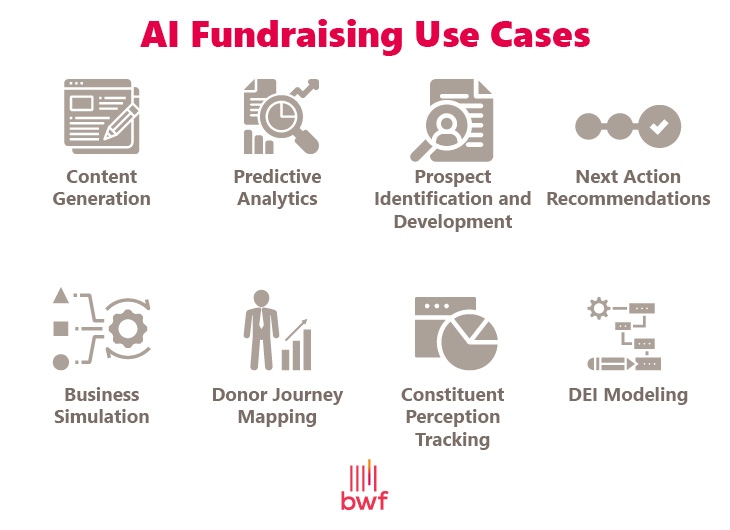Fundraising Consultant: Professional Assistance to Enhance Your Nonprofit's Fundraising
Fundraising Consultant: Professional Assistance to Enhance Your Nonprofit's Fundraising
Blog Article
The Function of Neighborhood Involvement in Nonprofit Fundraising: Structure Lasting Relationships for Lasting Support
Neighborhood involvement is significantly recognized as an essential element of effective not-for-profit fundraising. By cultivating genuine partnerships with local stakeholders, organizations can cultivate count on and commitment, which are important for lasting assistance. However, the approaches and strategies employed to involve neighborhoods differ extensively, increasing vital concerns regarding performance and impact. What are the most effective practices for cultivating these important links, and exactly how can nonprofits determine their success in this field? Understanding these dynamics could considerably affect the future of fundraising efforts and the total objective of not-for-profit organizations.
Understanding Community Engagement
Area interaction is an important part of effective nonprofit fundraising initiatives. Nonprofits need to identify vital stakeholders-- such as area members, regional services, and other companies-- to create efficient involvement techniques.
Efficient area involvement is based on active listening and responsiveness to the needs and interests of the neighborhood. This process entails soliciting comments, understanding area dynamics, and making sure that the company's objective straightens with regional priorities. Involving the community can take various forms, consisting of public conferences, volunteer chances, and partnership campaigns, each created to motivate participation and financial investment in the organization's objectives.
In addition, neighborhood engagement ought to be approached as an ongoing dialogue instead than a single effort. By promoting a comprehensive environment where community voices are listened to and valued, nonprofits can construct a strong structure for future fundraising endeavors. Inevitably, a deep understanding of area engagement empowers organizations to create authentic connections that improve their general efficiency and sustainability.
Benefits of Solid Relationships
Solid partnerships created via area involvement return countless benefits for nonprofit fundraising efforts. Firstly, these relationships foster trust and credibility, important components in encouraging contributors to contribute. When potential advocates see a not-for-profit actively entailed in their community, they are much more likely to rely on its objective and effect.

Additionally, these connections promote reliable communication. Nonprofits can leverage their links to share stories of impact, updates, and needs, ensuring that advocates continue to be enlightened and involved. This open line of communication not only reinforces bonds but likewise encourages referral promo, expanding the not-for-profit's reach.
Last but not least, strong neighborhood ties can attract new partners and enrollers. Individuals and companies are more likely to line up with companies that show meaningful area involvement, supplying added resources and assistance that can dramatically enhance fundraising capacities. Thus, cultivating robust relationships with neighborhood involvement is important to a nonprofit's lasting fundraising success.
Approaches for Efficient Interaction
How can nonprofits properly engage their neighborhoods to boost fundraising initiatives? Normal updates, engaging web content, and calls-to-action can galvanize community rate of interest and engagement.
Second, holding community events, such as workshops, volunteer opportunities, or fundraising drives, helps with face-to-face communication, allowing nonprofits to showcase their effect and efforts. These events not only elevate funds however also grow connections and allow community participants to involve straight with the cause.
Third, applying customized interaction techniques can boost engagement. Customizing messages to certain contributor sectors based upon passions and past contributions fosters a sense of belonging and investment in Visit Your URL the company's mission.
Last but not least, producing collaborations with regional companies and community leaders can intensify outreach efforts. Joint initiatives can improve exposure and trustworthiness, showing a collective commitment to the area's well-being. By incorporating these approaches, nonprofits can build lasting connections that boost fundraising initiatives and drive sustainable support.
Measuring Interaction Success
While engaging the neighborhood is critical for effective nonprofit fundraising, determining the performance of these interaction initiatives is just as important. Establishing clear metrics allows organizations to evaluate how well they are getting in touch with their audience and accomplishing their fundraising goals. Trick efficiency indications (KPIs) such as contributor retention prices, volunteer engagement degrees, and engagement on social media sites systems give substantial information for analysis.

Regularly evaluating these metrics makes it possible for organizations to pivot their techniques when needed, guaranteeing that community interaction remains aligned with their general goal. Furthermore, sharing these outcomes with stakeholders promotes openness and develops count on, motivating additional neighborhood involvement. Eventually, a durable measurement structure not only educates future fundraising campaigns however also enhances the connection in between the not-for-profit and its advocates, preparing for sustainable success.
Instance Researches in Area Influence
Numerous study show the extensive effect that neighborhood engagement can carry not-for-profit fundraising success. One notable instance is the "Food for Thought" effort, where a local food financial institution partnered with colleges and businesses to host community dinners. These events not just elevated funds yet also cultivated a sense of belonging among individuals, dramatically boosting donor retention prices.
Another engaging situation is the "Green Spaces Job," which entailed neighborhood citizens in the revitalization of urban parks. This initiative not just garnered financial backing from local organizations however also cultivated a volunteer base that added to ongoing maintenance and programs. The sense of possession and satisfaction amongst neighborhood members equated into continual payments.
In the realm of arts, the "Art for All" project successfully involved local musicians and clients to produce collective art setups, leading to enhanced exposure and contributions for a neighborhood arts nonprofit.
These examples highlight that when nonprofits prioritize neighborhood participation, they can develop long-term relationships that improve fundraising efforts, ensuring sustainable support and fostering a lively area society. Such situations show that area interaction is not just a technique yet a crucial pillar of not-for-profit success.
Final Thought
Finally, neighborhood engagement is important to the success of nonprofit fundraising initiatives. By cultivating solid relationships with regional stakeholders, companies boost count on and credibility, resulting in improved contributor retention and commitment. Implementing effective engagement approaches and determining their influence makes certain that nonprofits can adjust and flourish. Ultimately, a durable foundation of area assistance not just amplifies fundraising possible but also cultivates a culture of cooperation, essential for attaining long-term business objectives and sustaining purposeful effect.
Nonprofits need to identify key stakeholders-- such as area members, local services, and other organizations-- to develop reliable interaction approaches.

In verdict, neighborhood involvement is integral to the success of nonprofit fundraising initiatives.
Report this page